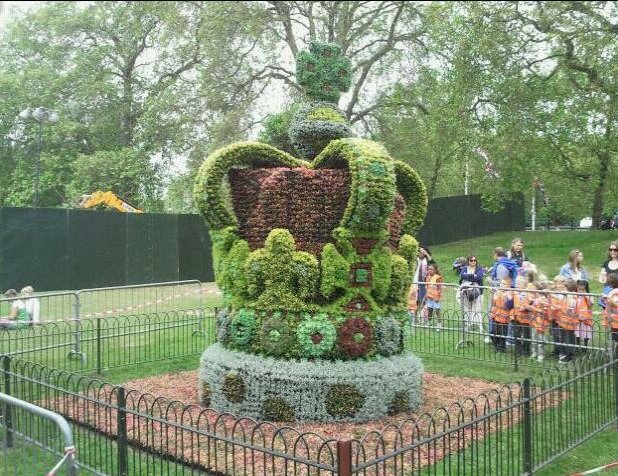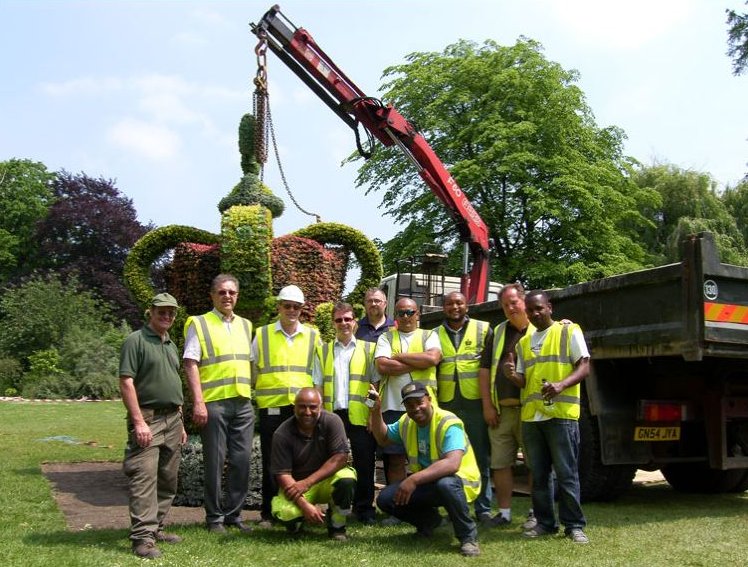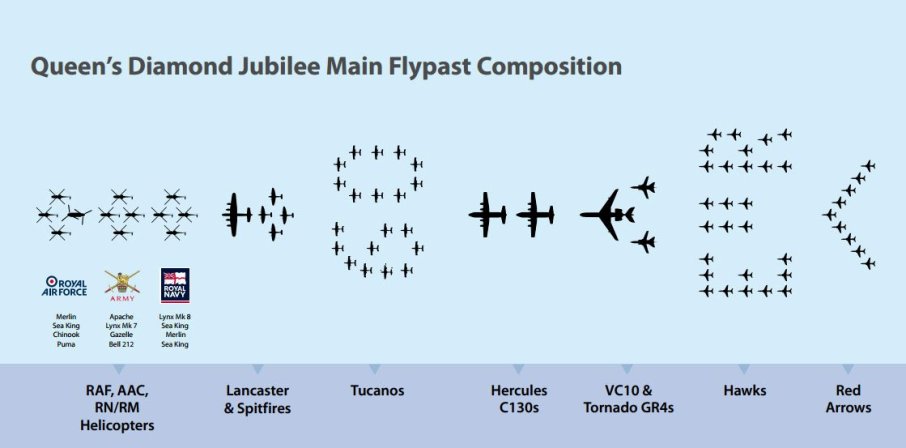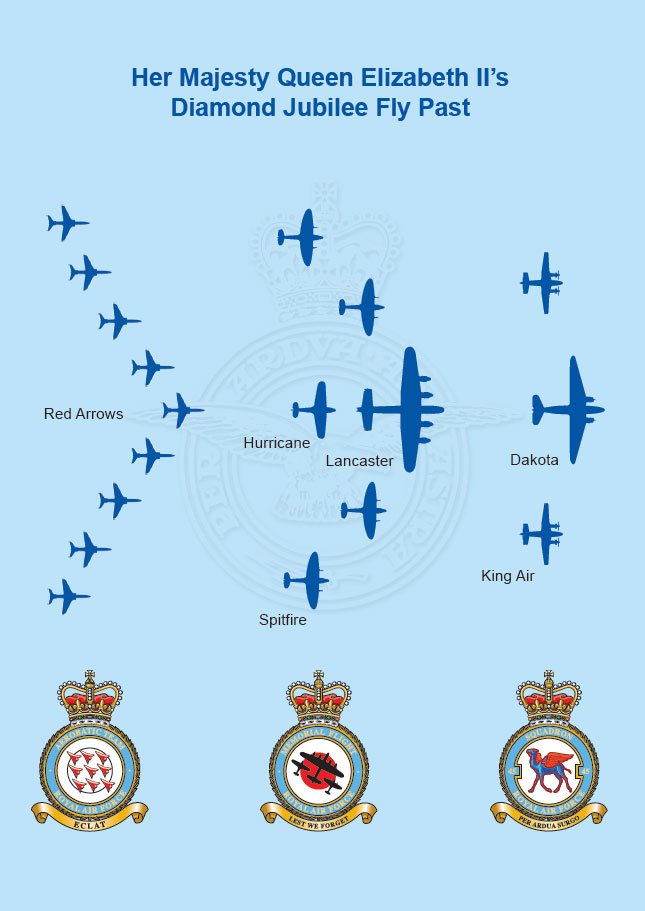Diamond Jubilee 2012
Home Page / Brush Home / Arts Home
This page will be dedicated to the many and varied images of the Diamond Jubilee which captured the hearts of the nation and the world right down to a quiet corner of Hucknall ......
From the skies there were fantastic views of fly-pasts and these were mapped out with exact precision - those graphs are included on this page as well as pictures of the flights themselves - but I want to start with a remarkable piece of topiary which I discovered very late in the day.
"In honour of Queen Elizabeth II’s Diamond Jubilee The Royal Parks, London today installed a four metre tall floral crown in St. James’s Park. The crown, which took five weeks to construct and weighs approximately five tonnes, sparkles with the brilliant blooms of 13,500 plants in the colours of the precious stones in the crown The Queen wore on her coronation day. In the next couple of days our gardeners will be adding a plump red cushion of flowers as the final floral flourish."
You can follow the story by selecting the picture above or the highlighted link and I reproduce the story narrative so far:
Diamond Jubilee Floral Crown
To commemorate The Queen's Diamond Jubilee, The Royal Parks has teamed up with its contractors to install a magnificent floral crown on the north side of the lake in St James's Park, just past West Island.
The crown is a floral replica of the St Edward's Crown that was used in the crowning of Queen Elizabeth II during her coronation ceremony on 2 June 1953.
The crown will be carefully looked after by skilled gardeners working for The Royal Parks and the plants will be kept healthy with water supplied from the park’s borehole.
The main sponsor of the floral crown is our facilities management partner Vinci Facilities. Other sponsors include The Royal Parks’ landscape maintenance contractors: Enterprise, Veolia, Turfsoil and Merediths, The Royal Parks’ Nursery managers.
Making of the floral crown
The 4 metre high and 2.5 metre wide planted floral crown took five weeks to construct and weighs approximately five tonnes.
It is supported by a steel framework that took four weeks to construct and the 13,500 Kernock Park plants, grown in Cornwall, took a week to put in place.
The crown sparkles with the brilliant foliage of 13,500 plants in the colours of the coronation crown’s sapphires, tourmalines, amethysts, topazes, citrines and gold.
The crown will even sit on a plump red cushion of 7,200 plants and measures 4.5 metres by 4.5 metres.
Types of plants used in the making of the crown
The type of plants used in the making of the crown are:
Alternanthera lehmannii Gold-Green
Alternanthera lehmannii Bright Red
Alternanthera lehmannii Dark Purple
Alternanthera lehmannii Yellow-Green
Echeveria elegans (common name 'Hens and Chicks')
Echeveria glauca (common name 'Hens and Chicks')
Helichrysum ambiguum Korma
Sedum pachyclados (common name 'Stonecrop')
Sedum spathulifolium Cape Blanco (common name 'Stonecrop')
I particularly like the images of the crown being isolated whilst in its preparation stage and its arrival in the park which echoes the arrival of our own telephone kiosk all those years ago!

Everyone is admiring the start of the red carpet of flowers beneath the regal topiary

The installation crew - well done everyone!
The Fly Past Maps

Her Majesty was thrilled to pieces when these formations flew in her honour.

The six senior royals were present on the balcony of Buckingham Palace along with thousands of loyal subjects in the Mall to see this second fly past on the fourth day of the Jubilee celebrations.
